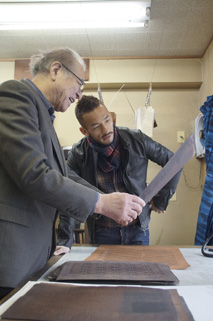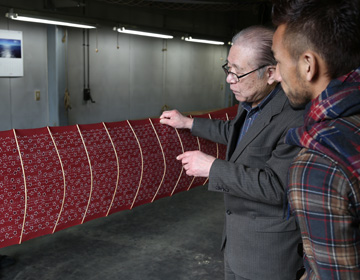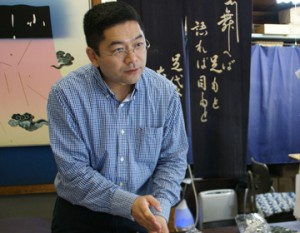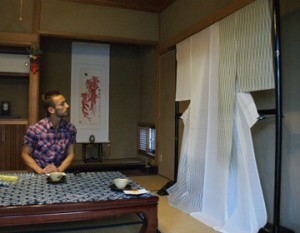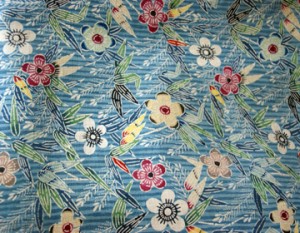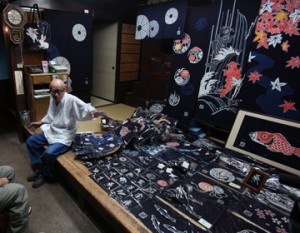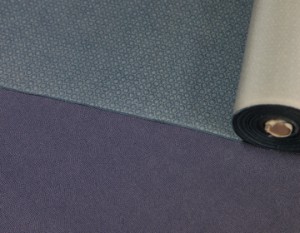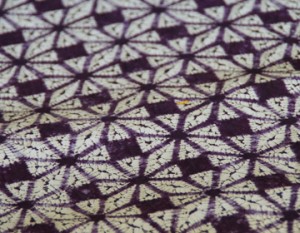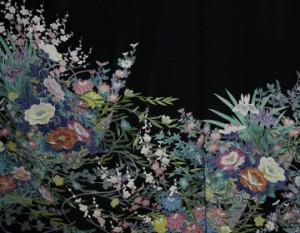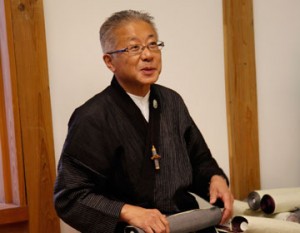Nambu Kodai Katazome that has continued since feudal period
The history of ”Nambu Kodai Katazome” in Iwate goes back to around 1620. It started when the chief of Morioka at that time invited Ebisuya Zaemon (Ono Family) as his main dye artist. He filled the ”Kamishimo” (top), ”Hakama” (pants) and ”Kosode” (kimono) with cranes which was the family crest of the Nambu Clan, and carved other various patterns.
We visited ”Ebisuya Ono Sensaisho” which has been in business since Ebisuya Zaemon. We were able to talk to the 17th generation Shintaro Ono.
The first thing that surprised us when we saw the stencil was how fine it was. Nakata sighed as he commented, ”Wow, this is so fine!”
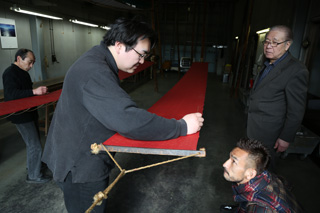
“Stencil” that has been passed on to the Ono Family
There are many old stencils in Ono Sensaisho that have a long history. There are stencils that exist from 300 years ago which means they were from the 1700s. They showed us several of those stencils.
”This was carved by a Living National Treasure”, said Ono showing us one of the stencils. Nakata again is surprised saying, ”This is so detailed, so intricate.”
”We cannot carve this with our skills. The errors will be much more distinct.” Ono commented. These are amazing stencils that Ono will totally surrender to.
Even though they are ”old stencils”, the design does not seem that old, which is surprising. There were geometric patterns that looked even modern. Ono told us, ”The charm of the stencil is infinite.” It is true that the work is not only fine but there are many designs that look pop. The stencils shows us not only the skill of the artists, but also the sense and the fashion at that time.
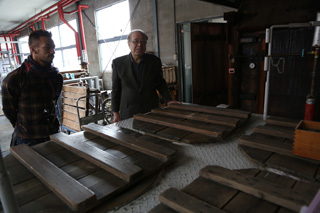
Clean water that produces infinite colors
In Kyoto, carving and dyeing is separate work, but with Nambu Kodai Katazome the whole process is done as one. So Ono does everything from preparing the stencil and putting the glue, to dyeing and washing in water. As Ono told us, ”The color is infinite”, you can dye with various colors. But the basic color for dyeing is indigo.
”In order to use the indigo, you have to have good water”, Ono told us. Here they use spring water for their work. In the past, there was a time when they washed in the outer moat of Nambu Clan, but they found dirt in the water so 3 generations before, about 170 years ago, they moved to the current place and settled here.
Future challenges for the dyeing industry
Lastly, Ono said, ”It is a shame that there are fewer people making this.” The reality is that there are fewer people who want to be artisans. Nakata was excited when he saw the stencils of Nambu Kodai Katazome. Their conversation got excited and he commented, ”It will be interesting if you can make a stencil from an artist’s painting.” Beautiful ”kimono” with fine stencil and indigo. We are sure that people will notice the charm if they have the chance to see it or wear the dyed products.
